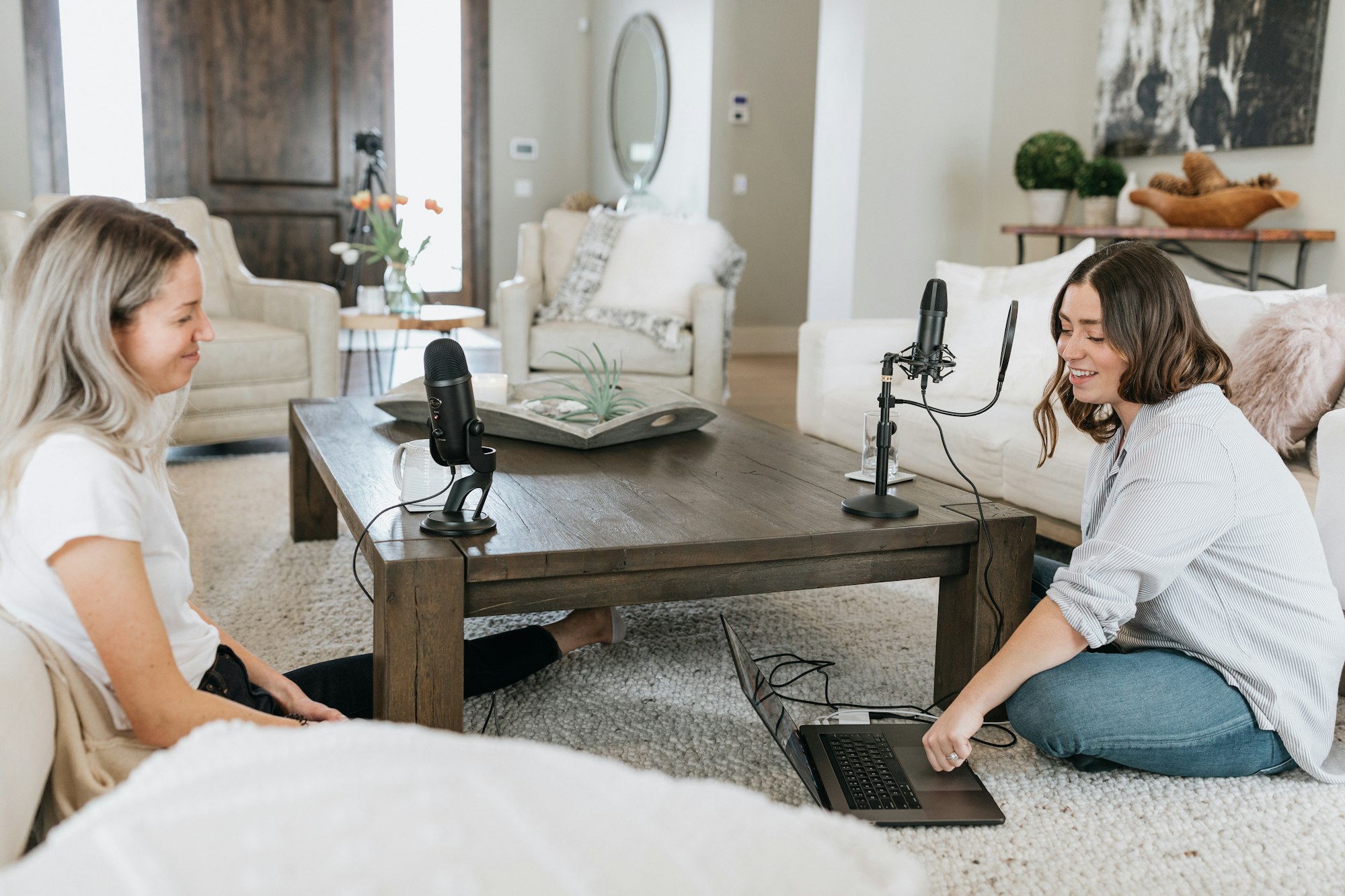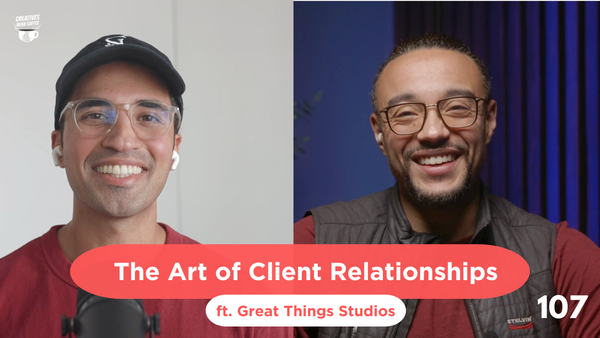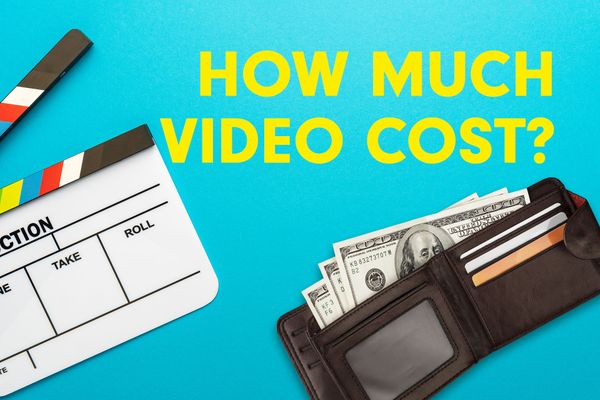Steps to Creating a Successful Podcast: From Choosing a Topic to Promoting Your Content
Introduction
Working in the field of video marketing for a decade we have produced dozens of podcasts for clients and participated in the entire production process for years. I can attest to the fact that podcasting has become increasingly popular in recent years for good reason. It's a great way to share your thoughts and ideas with the world, connect with others who share similar interests and build a loyal following.
If you're looking to create your own podcast, there are a few key steps you need to follow.
Let's dive in.
Choosing a Topic and Format
The first step in creating a successful podcast is to choose a topic that you are passionate about. This will make it easier for you to create content and keep your listeners engaged. Once you have chosen your topic, you need to decide on the format of your podcast. Will it be a solo show or will you have guests? Will you have segments or will it be a free-flowing conversation? These are important decisions that will impact the overall feel of your podcast. And for all my Quebec readers you have an important choice to make if you are fully bilingual... which language to choose?
Here are five top topics for creating a successful podcast:
- True Crime: Investigating and discussing true crime cases is a highly popular podcast topic. That one surprised me a bit but it's easy to understand once you remind yourself that it's a subject that naturally appeals to your natural human curiosity about real-life mysteries and crimes. Additionally, they often delve into the psychology of criminals and the motives behind their actions.
- News and Politics: Many listeners tune in to stay up-to-date on current events and political news. This one is obvious.
- Pop Culture: From TV shows to movies to celebrity gossip, pop culture podcasts cover a wide range of topics that appeal to a large audience.
- Personal Development: Podcasts that focus on personal growth and self-improvement are popular among listeners looking to better themselves. We all seek advice to enhance many parts of our life.
- Sports: Sports fans love listening to podcasts that cover their favorite teams, players, and games.
Recording and Editing
To start recording, you need a microphone and recording software. Choose a high-quality microphone to ensure good sound quality. Free software options like Audacity or GarageBand are available and provide exceptional recording quality. Ensure that you are in a quiet environment and that there are no external noises that could interfere with your recording. If you plan on recording with multiple guests, make sure that everyone is in a quiet environment and has their own microphones.

| Microphone | Price | Description | Pros | Cons |
|---|---|---|---|---|
| Blue Yeti | $129.99 | A popular USB mic with multiple polar patterns and high sound quality | Good sound quality, versatile, easy to use | Picks up background noise, heavy |
| Audio-Technica AT2020 | $99.00 | A cardioid condenser mic with excellent vocal clarity | Clear sound quality, good for vocals and instruments | Sensitive to plosives, needs shock mount |
| Shure SM7B | $399.00 | A dynamic mic that provides warm and smooth sound quality | Excellent sound quality, good for vocals and instruments, noise-cancelling | Expensive, needs strong pre-amp |
| Rode PodMic | $99.00 | A dynamic mic with excellent noise cancellation and durability | Good sound quality, affordable, durable | Needs a pre-amp, not very versatile |
| Samson Q2U | $59.99 | A dynamic mic with both USB and XLR connections, ideal for beginners | Affordable, versatile, portable | Not as clear as other mics, low sensitivity |
After recording, it's time to edit your podcast. This is where you can remove unwanted background noise or mistakes and add music or sound effects. Editing is a vital part of creating a professional and polished final product. You can choose from free or paid editing software options such as Audacity or Adobe Audition, which provide excellent editing capabilities. Listen to your recording carefully and make any necessary edits.
Here are some software options for recording and editing your podcast:
| Software | Price | Description |
|---|---|---|
| Audacity | Free | A popular open-source software for recording and editing audio |
| GarageBand | Free (for Mac users) | A beginner-friendly software with a simple interface |
| Ocenaudio | Free | A user-friendly software with real-time effects |
| Hindenburg Journalist | $95 (free trial available) | A professional-grade software with advanced editing capabilities and plugins |
| Adobe Audition | $20.99/month | A powerful software with advanced editing tools and effects |
Choose the one that fits your needs and budget, and start creating your podcast!
Overall, the recording and editing process is a crucial part of creating a podcast. A high-quality microphone and a quiet recording environment are essential. Editing allows you to create a professional and polished final product.
Publishing and Promoting
The final step in creating a podcast is to publish and promote it. This step can be just as important as the content creation itself. In order to publish your podcast, you will first need to choose a hosting platform that fits your needs. Popular hosting platforms include Buzzsprout and Libsyn. These platforms make it easy to upload your podcast and distribute it to various listening platforms such as Apple Podcasts, Spotify, and Google Podcasts.
However, just publishing your podcast is not enough. You will want to promote it as well to attract listeners. Social media is an excellent tool for promoting your podcast, but you can also consider other channels such as email newsletters or even paid advertising. Engaging with your listeners is also crucial for building your audience. Asking for feedback or suggestions can help you improve your podcast and keep your listeners engaged.
Here are some marketing strategies to promote your podcast and attract listeners:
- Social media marketing: Use social media platforms such as Facebook, Twitter, and Instagram to promote your podcast. Share your episodes, and behind-the-scenes content and interact with your followers. Use relevant hashtags to increase your visibility.
- Collaborate with other podcasters: Collaborating with other podcasters can help you reach new audiences. Consider guesting on other podcasts or inviting other podcasters to be guests on your show.
- Use paid advertising: Consider using paid advertising options such as Facebook ads, Google AdWords, or YouTube ads to reach a wider audience.
- Attend events: Attend events related to your podcast's topic or audience. Hand out business cards or promotional materials to increase your visibility.
- Create a website: Creating a website for your podcast can help you establish your brand and attract new listeners. Include information about your podcast, episodes, and contact information.
- Engage with your listeners: Encourage your listeners to leave reviews, rate your podcast, and provide feedback. Respond to comments and questions to keep your listeners engaged and build a sense of community.
Remember, marketing is an ongoing process. Use a combination of these strategies and be consistent with your efforts to attract new listeners and grow your audience. Creating a podcast is not just about the content itself. The publishing and promotion stages are equally important for reaching a wider audience and building a loyal following.
Conclusion

Congratulations! You are now well-equipped to embark on an exciting and fulfilling journey of podcast creation. By following these steps, you can confidently create a successful podcast that will captivate and engage your listeners, and build a loyal following. With the right topic and format, high-quality recording and editing tools, and effective promotion strategies, you can share your message with the world and establish yourself as a thought leader in your field.
If you want to get more information or want to book a recording session, try looking at the Great Things Studios website. It's a recording and video production studio based in Montreal.



